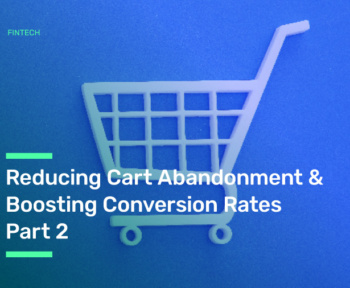
Table of Contents
- What is Customer Experience?
- What is the Impact of the Payment Step on Customer Experience Processes?
- How Craftgate Improves Your Business’s Customer Experience Process?
- Conclusion
In today’s world, the experiences customers have throughout the purchasing process form the foundation for building brand loyalty and ensuring long-term success. A study conducted by Sales Force strongly supports this notion, revealing that 89% of users tend to make repeat purchases from the same website due to positive customer experiences. Furthermore, research indicates that even a modest 5% increase in customer retention rates can lead to 25% to 95% profit increases.
Payment orchestration technologies, which enable businesses to manage all online payment processes most effectively, play a crucial role in improving the customer experience processes for companies. This article will provide tips on how businesses can enhance customer experience through payment orchestration platforms.
What is Customer Experience?
Customer experience, in its simplest definition, encompasses every interaction between a customer and a brand throughout the journey of purchasing any service or product from a business. However, this experience should not be evaluated solely regarding the purchasing transaction. The impact a company creates in the minds of its target audience before the purchase process can also provide a clue about the customer experience processes.
Moreover, post-sales processes such as delivery, returns, cancellations, support, maintenance, etc., determine whether the customer experience journey is positive or negative. In other words, customer experience includes the customers’ emotions, thoughts, and actions regarding the brand with which they interact.
What is the Impact of the Payment Step on Customer Experience Processes?

Many factors positively or negatively influence customer experience during, before, and after purchasing. Among these factors, the payment step is one of the most critical points in the purchasing process, often representing the final step when customers buy a product or service.
We can evaluate the impact of the payment step on the concept of customer experience under the following headings:
User-Friendly Interface:
A complex or difficult-to-understand payment step can cause customers to struggle while completing the transaction. A user-friendly interface guides customers with step-by-step instructions and visible options. Thus, it assists customers in completing the transaction quickly and easily. To learn how the payment page should be designed to be user-friendly and ensure the success of the payment process, you can refer to our article titled “Reducing Cart Abandonment & Increasing Conversion Rates | Part 1.”
Validations in the Payment Step:
Completing specific validations on the payment page allows users to enter their card information at that moment to minimize potential errors, enabling the payment process to be successful. For example, validations such as accepting only numeric values where the expiration date information should be entered prevent the payment from failing due to user errors.
For detailed information about these validations, you can access our article “Reducing Cart Abandonment & Increasing Conversion Rates | Part 2.”
Payment Step Transaction Speed:
In today’s world, purchasing any product or service has become a process that should be fast, smooth, and seamless for users. Therefore, any issue in the payment step can negatively impact the customer experience. A lengthy and complex payment step can lead customers to abandon their carts.
Different Payment Options:
According to a study by Stripe, 85% of e-commerce customers abandon their purchases when they do not see their preferred payment method during checkout. In this context, it becomes even more critical for businesses to determine the payment methods they will work with by considering customer preferences. Companies can increase the likelihood of customers completing the payment step by offering various alternatives such as credit cards, debit cards, e-wallets, installment options, and Payment by Link and QR Code.
Payment Errors and Downtimes of Payment Service Providers:
Another crucial aspect that negatively impacts the customer experience is payment errors and interruptions in virtual POS and payment institutions. Payment errors can be systemic errors in the virtual POS systems where the payment process occurs or user-related errors. Examples of user-related payment errors include entering incorrect card information or having insufficient card limits.
As we will explain in detail later in our article, Craftgate facilitates businesses in seamlessly receiving payments, even in cases of systemic payment errors and interruptions in virtual POS. For instance, the Autopilot feature ensures that if there is any interruption in the virtual POS or payment institution where the payment is supposed to go through, the payment will go through another operational virtual POS. This prevents customers trying to make payments at that moment from having a negative payment experience and controls the business from losing revenue.
How Craftgate Improves Your Business’s Customer Experience Process?

As seen, the payment step is the final stage of the shopping experience (preceding post-sales support processes) and carries an emotional impact.
Transaction speed, user-friendly interface, validations to be performed on the payment page, different payment options offered to customers, payment errors, and interruptions in virtual POS/payment service providers determine whether the customer experience process at the payment step will be positive or negative.
A well-designed payment step can increase satisfaction in terms of customer experience, build brand loyalty, and enhance the likelihood of repeat transactions. Turning the payment process into a positive experience ensures that customers approach your brand or service with a more positive sentiment.
Craftgate payment orchestration enables businesses to manage payment processes cost-effectively but also assists them in providing customers with a high-quality payment experience.
We can list the ways Craftgate improves businesses’ customer experience processes based on the possible effects of the payment step on the customer experience as follows:
- Transfer of Information on Required Validations on the Payment Page: Craftgate provides know-how transfer to the technical teams of member merchants regarding the validations to be performed on the payment page with its deep expertise in the online payment domain and experienced team. Thus, it ensures that the payment step is user-friendly and allows payments to fail due to incomplete validations.
- Assistance in Eliminating Potential Issues in the Payment Step for Businesses to Provide Seamless Payment Experiences to Customers: Craftgate allows member merchants to receive payments smoothly, even in the case of systemic payment errors or virtual POS interruptions, thanks to features such as Autopilot and Payment Retry.
- Preventing Issues Such as “Payment Received but Order Not Created” and “Multiple Charges for Businesses” Customer Experience Processes: In cases where the systems of the organizations where the payment will take place are delayed in responding to the status of the payment, payment may be deducted even if an order still needs to be created. At this point, Craftgate lists such transactions if there is no response from the relevant organization confirming the payment within a specific period. This prevents customers of member merchants from experiencing a negative shopping experience due to problems like “payment received but order not created.”
- Classification of Error Codes from Relevant Organizations in Payment Errors and Assistance in Providing Understandable Messages to Customers: Craftgate classifies error codes from relevant organizations in payment errors and helps businesses offer understandable messages to their customers. This is crucial in directly influencing the concept of customer experience in the payment step.
- Assisting Businesses in Providing an Easy Payment Experience to Customers and Increasing Customer Loyalty with Closed-Loop Wallet and Card Storage Solutions: Closed-loop wallets, allowing users to spend specifically on a particular website by creating a wallet account, play a significant role in terms of customer experience. Craftgate member merchants can define refunds and points to the closed-loop wallet accounts they create for their customers. Additionally, through PCI DSS-1 certification, Craftgate enables member merchants to allow their customers to make payments with stored cards.
Conclusion
In summary, payment orchestration technologies are one of the most powerful tools businesses should utilize to enhance their customer experience processes. Therefore, in today’s world, where the concept of customer experience in e-commerce is as crucial as speed and convenience, businesses aiming to differentiate themselves in competition will increasingly focus on payment orchestration technologies.
Craftgate, through solutions such as being able to receive payments even during systemic payment errors and interruptions, closed-loop wallets, card storage, eliminating recurring/pending order problems, and classifying payment errors to display meaningful messages to customers, helps member merchants elevate their customer experience processes to the highest level and provide their customers with an unforgettable payment experience.
If you also want to improve the customer experience processes in the payment steps of your business and go over your strategy in the payment collection area, please feel free to contact us.
To share our experience and knowledge in the field of payment systems, we regularly publish content on the Craftgate Blog.






